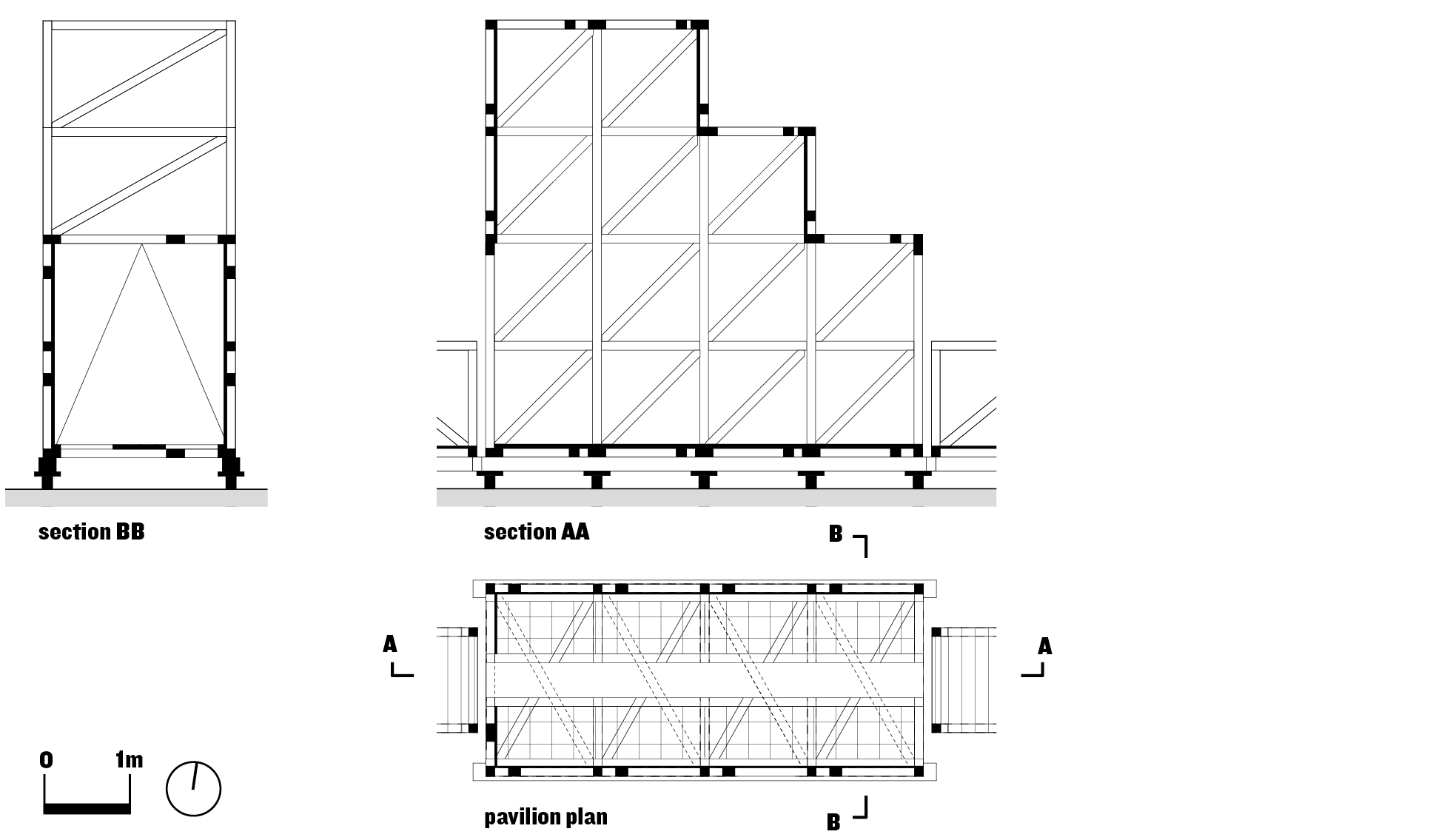Click to download drawings
Paradigma Ariadné is a practice that chooses, they say, to ‘do everything’. From outdoor education trails to exhibitions and publications, the Budapest‑based office is committed to transforming Hungary’s architectural culture while reckoning with its complex history. At its core are Attila Róbert Csóka, Szabolcs Molnár and Dávid Smiló, who founded the practice in 2016 as recent graduates. Their inventive and narrative approach has brought them international recognition, such as in their curation of the Hungarian Pavilion at the 2021 Venice Architecture Biennale.
The legacies of socialist state architecture in the Hungarian People’s Republic of 1949–1989 weaves through Paradigma Ariadné’s work. In their words, they aim to ‘create another narrative: a radical reaction to the state of architecture in Hungary during socialism, when state architects did not interact with the people’. For their Venice pavilion, they invited 12 architects from Central and Eastern Europe to respond to monumental buildings of the socialist era, imagining their potential futures. For Paradigma Ariadné, the contemporary is intrinsically tied to the past, and historical narratives are fertile ground to forge new ones.

Click to download drawings
Their 2023 project, dubbed Blue Signature, embodies architecture as storytelling. An outdoor education trail stitched through a lush, rainforest‑like bogland in the suburbs of Budapest, it consists of an assemblage of elevated wooden walkways and pavilions. While the walkways are largely left exposed, the four pavilions and bridge are painted a deep blue. One of the rarest naturally occurring colours, it contrasts with the surrounding vegetation, pointing to the artificiality of the landscape and larger questions of architecture in the anthropocene. As vegetation will encroach and appropriate the structures over time, the architects imagine a scene similar to René Magritte’s surrealist 1965 painting The Blank Signature, an impossible image where a human figure on horseback merges with and disappears into the forest. Like Magritte’s figure, the blue pavilions will oscillate between visibility and invisibility as seasons change.

Click to download drawings
Signs provide insight to locals, children and tourists who crowd the bogland at weekends, eager to learn about Budapest’s biodiversity. ‘We created a rounded and complete narrative,’ the architects explain, interpreting the site’s industrial history, rural condition and ecological importance. The structures are playful, incorporating climbing walls and netted walkways that lend the feeling of an obstacle course. The project is entirely antithetical to the monumental didacticism of the Soviet era.
This was Paradigma Ariadné’s first design‑build project, exemplifying their dexterity in handling a wide range of work. Ultimately, their method is conversation, where discussions within and outside the office propel projects forward. These critical dialogues, paired with an agility to work between formats and their ambitions to take on larger projects, position them to make real change within Hungary: architecturally, culturally and even politically.
Lead image: For an outdoor trail in a bogland outside Budapest, Hungarian architecture practice Paradigma Ariadné referred to The Blank Signature, a surrealist painting from 1965 by René Magritte. In this collage, the project is integrated into Magritte’s woodland. Credit: Paradigma Ariadné
Source link : http://www.bing.com/news/apiclick.aspx?ref=FexRss&aid=&tid=674e5931e0554c729816ce868b2aa0b0&url=https%3A%2F%2Fwww.architectural-review.com%2Fawards%2Far-emerging%2Fparadigma-ariadne-hungary&c=13386919452640889826&mkt=de-de
Author :
Publish date : 2024-12-02 03:29:00
Copyright for syndicated content belongs to the linked Source.


